
- www.bbc.co.uk Sutton Hoo 6th Century Byzantine bucket pieces unearthed in dig
A month-long excavation finds further fragments from a bucket that was first discovered in 1986.
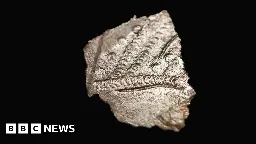
Missing pieces of a 6th Century Byzantine bucket have been uncovered at a site world-famous for its historical discoveries.
A month-long excavation with archaeologists, conservators and volunteers from the television show Time Team has taken place at Sutton Hoo, in Suffolk.
Fragments of the bucket were first discovered in 1986, with more found in 2012, the National Trust, which manages the site, said.
Further pieces have now been found and experts believed the bucket had previously been damaged and repaired.
-
Summer of excavations at Herefordshire's Arthur's Stone
> A LAST chance to get up close to excavations at a mysterious Herefordshire archaeological site will be on offer this summer, as archaeologists work to solve a mystery. > > For a final summer, members of the public will get the chance to get up close to archaeological excavations being carried out at Arthur’s Stone. > > Tours of the mysterious and evocative English Heritage site in Dorstone also took place in 2022 and 2023 as part of a project to investigate early prehistoric Herefordshire, undertaken by The University of Manchester, Cardiff University and the American Institute for Field Research, in partnership with English Heritage. The project has significantly changed academic understanding of how the monument was used, and its team hope to uncover more of its secrets in 2024. > > The Neolithic burial chamber comprises nine upright stones and a gigantic 25-tonne capstone. The 5,700-year-old Golden Valley site is most famous for its links to legends of King Arthur and for being a source of inspiration for the stone table in CS Lewis’s The Lion, The Witch, and The Wardrobe. > > So far, the project has started to unravel a complex sequence of changes to the monument spanning about seven centuries in the early Neolithic (3,700 – 3,000 BCE). We now know that it started as a stone chamber or ‘dolmen’ in the 37th century BCE encircled by a thick stone ring, with an entrance on the north. It was later re-oriented to face south and remodelled within a long cairn faced by drystone walls, with a false entrance between two projecting ‘horns’ of the cairn. > > The archaeologists found evidence for an avenue of wooden posts leading to the new entrance which were replaced some centuries later with standing stones. It now looked more like the Long Barrows at Belas Knap and Stoney Littleton (also cared for by English Heritage). A narrow passage was built into one side of the cairn so that the old entrance could still be reached. Inside the passage they found pottery, bone, pitchstone from the Isle of Arran and rock crystal, probably brought from North Wales
- www.theguardian.com Does a cave beneath Pembroke Castle hold key to fate of early Britons?
Scientists hope wealth of prehistoric material in Wogan Cavern in Wales is well preserved enough to reveal what really happened to our most ancient ancestors

> Pembroke Castle has been a seat of power for centuries. It was the birthplace of Henry Tudor, father of Henry VIII, and is one of the country’s best preserved medieval strongholds, containing a maze of passages, tunnels and stairways, as well as a vast gatehouse tower. Scientists have discovered that the fortress has also been concealing a startling secret. A cave, known as Wogan Cavern, which lies directly underneath Pembroke Castle, has been found to contain a treasure trove of prehistoric material, including ancient bones and stone tools left behind by early Homo sapiens and possibly by Neanderthals. > > These remains will provide key information about the settling of Britain in prehistoric times, say scientists, who last week began their first major excavation of the year at Wogan. Work on the site over coming years should provide answers to major puzzles about prehistoric Britain, including the end of the Neanderthals’ occupation about 40,000 years ago. > > Early finds at Wogan include a wide range of fossils including mammoth, reindeer, and woolly rhino, as well as the remains of a hippopotamus, a species that last wallowed in British waters 125,000 years ago. Archaeologists have also found that much of the cavern’s floor is covered with a layer of stalagmite which has preserved the soil, bones, proteins and DNA that lie below. > > “The site has got fantastic potential,” said Prof Chris Stringer of the Natural History Museum, London. “It’s the best prospect that we have got in providing fresh material that can help us find out how Neanderthals lived in Britain and learn how they were replaced by Homo sapiens.”
- www.bbc.com Volunteers help to unearth pre-historic significance of Quantocks
A team of professional and amateur archaeologists has been digging for pre-historic remains.
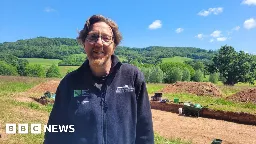
> A team of professional and amateur archaeologists has been digging for prehistoric, Roman, medieval, and Georgian remains. > > The dig at Cothelstone Farm in the Quantocks is funded by the National Lottery Heritage Fund and gives volunteers the opportunity to learn how to excavate a site. > > The site was significant to people during the Bronze Age right up until medieval times, archaeologists said. > > Dan Broadbent, historic heritage officer for the Quantock Landscape Partnership Scheme, said: "What makes it so special is the idea that you have a single place looking out at this fantastic view which was clearly important for people in the past over a long period." > > The scheme, alongside charity DigVentures, organised the dig after seeing aerial images of the site which showed "potential features". > > ... > > "As the story has evolved, we discovered that the ring ditch was probably visible into medieval times, the Romans would have seen it, the Anglo-Saxons would have seen it, so being able to tell that story has been very cool." > > The ring ditch was likely a ceremonial site during the Bronze Age.
- www.bbc.com Mortar Wreck: Grave slabs recovered from shipwreck in Poole Bay
The stone slabs were found on the Mortar Wreck - a 13th Century shipwreck in Poole Bay.

> A number of grave slabs from England's oldest known shipwreck have been recovered by maritime archaeologists. > > The remains of the 13th Century Mortar Wreck were discovered in Poole Bay, off Dorset, in 2020. > > Cauldrons, cups, pottery and kitchen objects have already been brought to the surface. > > A team from Bournemouth University has returned to the site to raise the carved slabs, along with stone mortars - made for grinding flour. > > Dr Derek Pitman, head of archaeology at the university, said the wreck was "really well preserved". > > "It was full of stone mortars and burial slabs. I've never seen anything like it," he said. > > "It probably hit some choppy waters as it was leaving the harbour. > > "It's a substantial ship and had a relatively large cargo."
-
'Lost' bluestone provides vital clues to Stonehenge history
> A “lost” boulder rediscovered in a box in Salisbury Museum has provided powerful evidence that the bluestones of Stonehenge were transported from West Wales by glacier ice. > > The evidence also makes it clear that the story of the transport of 80 bluestones by heroic Neolithic tribesmen, one of the great Stonehenge myths should now be dumped. > > New research, published today in the International Quaternary Science Journal, describes in detail the surface characteristics of the boulder, which suggest that it has had a complex history beginning with glacial entrainment and transport in North Pembrokeshire and ending at Stonehenge with human damage in Neolithic and modern times.
- www.bbc.com Part of Iron Age round house discovered in Alderney
Dig Alderney has discovered part of an Iron Age round house in its latest excavation.

> Dig Alderney has discovered part of an Iron Age round house in its latest excavation. > > Initially, the most recent dig had not revealed much archaeology but this latest find will offer a target for future excavations. > > The team was hoping to find more evidence of Iron Age and Roman Alderney in the trio of trenches that they opened on Les Hugettes. > > A pair of trenches were also positioned along Les Mielles to seek more of the large Roman building discovered in 2017. > > Dr Jason Monaghan said: "What came as a surprise was the very late date of the pottery found beneath the floors of the building. > > "It seems that it was not constructed until the 4th Century AD and was modified even later by the addition of crude drystone walls. > > "Some of the pottery in the latest layers may prove to be post-Roman." > > Other finds from this dig include 850 shards of Roman pottery with most from the 3rd and 4th Century, a bronze coin - of the Emperor Valens AD364-367 and a silver coin of Caesar Valerian II AD255.
- www.bbc.com Time Team to dig for 'undisturbed archaeology' at Sutton Hoo site
The National Trust says the two-year project will aim to grow its understanding of the land.

> A major research project will take place to "reach the undisturbed archaeology" at a site famous for unearthing an Anglo Saxon burial ship. > > The National Trust, which owns the site, said the two-year research project at Sutton Hoo near Woodbridge, Suffolk, will aim to grow its understanding of the land. > > ... > > The excavation will be filmed by Time Team as a series exclusive for a documentary special, hosted by Sir Tony Robinson. > > The project, which starts in June, will build on work carried out by Time Team in 2021 and 2023. > > Mr Wainwright said previous work by Time Team identified mysterious features in Garden Field, Sutton Hoo. > > "We know from previous work in this field, it’s likely we will find prehistoric flint tools and fragments of Anglo Saxon objects from burials scattered through the plough soil, but working out what the mysterious geophysical anomalies are will be our focus."
- www.independent.co.uk Purpose of UK’s 4,000-year-old mysterious ‘Seahenge’ structure finally decoded
Researchers estimate strange structure built using timbers dating from Spring 2049 BC
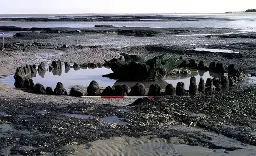
> The mysterious ancient structure was first revealed in 1998 by the shifting sands of Holme-next-the-sea beach on the north Norfolk coast. > > It consists of an upturned tree stump surrounded by 55 closely fitted oak posts and was originally built on the salt marsh away from the sea. > > Researchers estimate it to have been built using timbers dating from 2049 BC. > > The strange structure was positioned such that dunes and mud flats protected it from the sea. > > A layer of peat which slowly covered the timbers also protected them from decay over thousands of years. There is a second, adjacent ring centred on two oak logs laid flat, which is also dated to the same year. > > ... > > Now, a new paper concludes that the Seahenge and the adjacent circle may have been constructed during a bitterly cold climatic period as a ritual to extend the summer and return to warmer weather. > > “Dating of Seahenge timbers showed they were felled in spring, and it was considered most probable that these timbers were aligned with sunrise on the summer solstice,” archaeologist David Nance from the University of Aberdeen said. > > “We know that the period in which they were constructed 4,000 years ago was a prolonged period of decreased atmospheric temperatures and severe winters and late springs placing these early coastal societies under stress,” he said. > > The Seahenge’s alignment matches with sunrise on the summer solstice, suggesting it mimicked the “pen” described in folklore for an unfledged cuckoo to keep singing and extend the summer. > > Archaeologists suspect that the strange monument’s structure imitates the winter dwellings of the cuckoo remembered in folklore – a hollow tree or ‘the bowers of the Otherworld’ represented by the upturned oak stump at its center. > > “Summer solstice was the date when according to folklore the cuckoo, symbolising fertility, traditionally stopped singing, returned to the Otherworld and the summer went with it,” Dr Nance explained. > > “The ritual is remembered in the ‘myth of the pent cuckoo’ where an unfledged cuckoo was placed into a thorn bush and the bird was ‘walled-in’ to extend the summer but it always flew away,” he said. > > The other structure, according to Dr Nance, points to legends of ‘sacred kings’ who were sacrificed if misfortune fell on the community. > > “Evidence suggests that they were ritually sacrificed every eight years at Samhain (now Halloween) coincident with the eight-year cycle of Venus,” he said. > > “Both monuments are best explained as having different functions and associated rituals, but with a common intent: to end the severely cold weather,” Dr Nance said.
- www.bbc.co.uk Chichester: Archaeologists discover Norman bridge during dig
The week-long dig in Chichester's Priory Park is due to end on Monday.
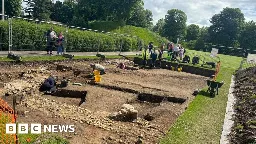
Archaeologists have discovered a Norman bridge during a dig in a West Sussex city.
Experts working in Chichester's Priory Park have uncovered the remains of a military causeway that would have led to the city's 11th Century castle.
The team from Chichester and District Archaeology Society made the discovery during an excavation in the park which is set to finish on Monday.
An open day is being held on Saturday for people to come along and hear about the finds.
- www.theguardian.com Detectorist unearths bronze age hoard after getting lost on treasure hunt
John Belgrave, 60, uncovered rare sword, axe head and bangle in Dorset after becoming separated from group
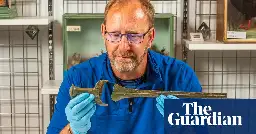
> An amateur detectorist has described how he unearthed a bronze age hoard, including a rare sword, after getting lost during a treasure hunters’ rally. > > John Belgrave, 60, became separated from the main group of detectorists and headed to higher ground to try to spot them when he made what he has called the find of a lifetime. > > His device activated as he walked along and when he dug down he uncovered a rapier sword dating back to the middle bronze age. > > The 61cm (2ft) rapier had been deliberately broken into three pieces and placed in the ground alongside the remains of a wealthy landowner. > > Unusually, the hilt, though cast in bronze, was shaped to mimic a wooden handle. Only two similar rapiers have been found in Britain before and they were incomplete. > > As well as the rapier, a palstave axe head and a decorative arm bangle were found, presumably buried as an offering. > > Dorset Museum and Art Gallery raised £17,000 to buy the objects, with the proceeds shared between Belgrave and the landowner.
-
Time Team's 30th anniversary dig - an Iron Age -> Roman industrial village in Dorset

YouTube Video
Click to view this content.
- www.heritagedaily.com Study indicates that Firth promontory could be an ancient crannog
A study by students from the University of the Highlands and Islands has revealed that a promontory in the Loch of Wasdale in Firth, Orkney, could be the remains of an ancient crannog.
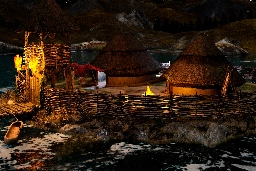
> A study by students from the University of the Highlands and Islands has revealed that a promontory in the Loch of Wasdale in Firth, Orkney, could be the remains of an ancient crannog. > > A crannog is a partially or entirely artificial island, typically built in lakes and estuarine waters of Scotland from the prehistoric period onward > > Despite significant variations in methodology, most crannogs on mainland Scotland were built by driving timber piles into the loch bed and filling the interior with peat, brush, stones, or timber to create a solid foundation. > > In largely treeless regions like the Western Isles, these island dwellings utilised a diverse mix of natural, artificially enlarged, or entirely artificial islets. > > The discovery was made by students from the UHI Archaeology Institute, who were conducting test-pitting on a promontory at the northern end of the Loch of Wasdale. > > According to a press statement by UHI: “It appears as an islet on the 1882 Ordnance Survey map. Little is known about the site, but the fact the shoreside edges appear to show the remains of walling led to the suggestion it may be a crannog.” > > ... > > The test-pitting revealed large quantities of cairn-like rubble, in addition to more structural remains or a stone surface, indicating that the entire promontory/islet is artificial. > > Martin Carruthers, a lecturer at UHI, said: “A structure made up of some very large masonry seems to lurk at the heart of the cairn makeup. Constructing this ‘monument’ must have been a very substantial undertaking.” > > “In terms of artefacts, apart from some later post-medieval glazed pottery, we recovered a single worked flint, probably a ‘thumbnail’ scraper, which is most likely later Neolithic in date,” added Carruthers.
- www.banburyguardian.co.uk Archaeologists discover prehistoric settlement and Anglo-Saxon burial ground at site of new Banbury housing estate
A prehistoric settlement and an Anglo-Saxon burial ground has been discovered at the site of a new housing estate in Banbury.
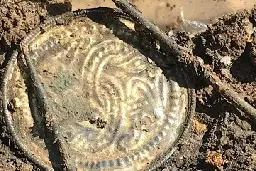
> Archaeologists at the Calthorpe Gardens development have found over 18,800 artefacts dating from the Prehistoric Mesolithic, Late Bronze Age-Middle to Late Iron Age, and early Anglo-Saxon times. > > Local residents have been invited to view the host of discovered artefacts at a free event taking place at Banbury Town Hall on Thursday June 6, at 7pm. > >.The Orbit Homes site is now considered one of significant regional importance after experts Border Archaeology discovered the settlement and burial ground. > > Handmade pottery and textile tools were found at the Late Bronze Age to Middle/Late Iron Age small settlement. > > The remains of at least 52 people - as well as grave goods such as bead necklaces, pendants, personal objects and weapons - were found at the Anglo-Saxon burial site. > > Alongside these findings, 9,310 litres of paleoenvironmental samples were also taken to shed light on the human activity of the past.
-
Archaeologists scour land once covered by Wigan Galleries for historic treasures
www.wigantoday.net Trenches have been dug in the foundations of Wigan's former shopping centre in a bid to find archeological treasuresFirst the demolition, soon comes the building, but at the moment the site of Wigan’s Galleries shopping centre is in the hands of archaeologists.
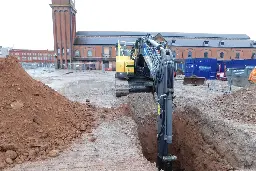
> First the demolition, soon comes the building, but at the moment the site of Wigan’s Galleries shopping centre is in the hands of archaeologists. More than 25 exploratory trenches have been dug on the large tract of land between Market Place and New Market Street as experts bid to unearth historical treasures. > > Such excavations are a standard part of the process in larger developments such as the Galleries25 project. > > Chances to seek out buried artefacts and remnants of old roads and buildings are few and far between so they have to be seized upon. And Wigan is ancient enough to have the potential to yield up all kinds of secrets from the past. > > The town centre has been there for hundreds of years and played a key part in the English Civil War of the 17th century and Roman remains have also been recovered from sites nearby, leading experts to speculate that this is the empire’s settlement known on maps of the time as Coccium. > > But so far the works, which are of course delaying the start of construction of a major new complex incorporating leisure, hospitality, retail and accommodation, have proved rather disappointing.
- www.heritagedaily.com Archaeologists search crash site of WWII B-17 for lost pilot
Archaeologists from Cotswold Archaeology are excavating the crash site of a WWII B-17 Flying Fortress in an English woodland.

> Cotswold Archaeology have been tasked by the Defense POW / MIA Accounting Agency to search the crash site for the remains of the pilot, who died when the B-17 crashed following a system failure in 1944. > > At the time, the plane was carrying a payload of 12,000lbs of Torpex, an explosive comprised of 42% RDX, 40% TNT, and 18% powdered aluminium. Torpex was mainly used for the Upkeep, Tallboy and Grand Slam bombs, as well as underwater munitions. > > The pilot was declared MIA when the plane exploded into an inferno, however, using modern archaeological techniques, the researchers plan to systematically excavate and sieve the waterlogged crash site to recover plane ID numbers, personal effects, and any surviving human remains. > > It is the hope of the excavation team members that they will be able to recover the pilot’s remains and return him to the United States for burial with full military honours. > > The Defense POW/MIA Accounting Agency (DPAA) is an agency within the U.S. Department of Defense whose mission is to recover unaccounted Department of Defense personnel listed as prisoners of war (POW) or missing in action (MIA) from designated past conflicts.
- www.popularmechanics.com A Couple Renovated Their Kitchen—and Stumbled Upon Buried Treasure From the 17th Century
While digging deeper for more space, this family uncovered relics from a civil war.
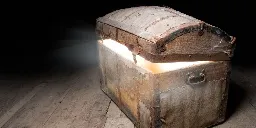
Follow-up on earlier report:
> In a remarkable discovery, a couple accidentally unearthed a treasure trove of 17th-century coins while renovating their farm in West Dorset, England. > > The find, which occurred nearly five years ago, came as the couple dug deeper to increase the head height in their long-house cottage at South Poorton Farm. Robert Fooks struck a glazed pottery bowl with his pickaxe, revealing about 100 coins dating back to the first English Civil War. > > The “Poorton Coin Hoard,” as it became known, included gold coins from James I and Charles I, as well as silver half crowns, shillings, and sixpences from the time of Elizabeth I, Phillip, and Mary. The collection recently sold for approximately $75,000 at Duke’s Auction House.
- www.bbc.co.uk Skipsea dig reveals medieval buildings and artefacts
A dig taking place on the East Yorkshire coast has revealed rare early medieval tools and building.
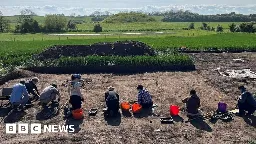
Archaeologists excavating an early medieval site on the East Yorkshire coast said they have found buildings and objects of "national significance".
The team from the University of York began work uncovering the remains of a timber hall close to Skipsea, and have now found evidence of an even earlier settlement.
Dr Jim Leary, from the University's Department of Archaeology, said only a "handful" of such sites existed in the UK and the discovery of buildings and tools that could date back as far as the 5th or 6th Centuries was "phenomenal".
The team are expected to be on site until the end of May.
- www.bbc.com Mystery of inscription found written under Shropshire patio slab
An obscure inscription thought to be Hebrew has been unearthed in John Adams's home in Shropshire.
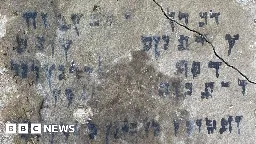
> A homeowner is searching for answers after an obscure inscription was found written underneath a stone slab in his garden patio. > > Builders made the discovery while working on the 300-year-old home of John Adams in Norbury, Shropshire. > > Mr Adams shared a photograph on social media to try to work out what the text might say with several people suggesting it was in Hebrew. > > ... > > Mr Adams, who works for the National Trust, said his house was located on a road that was once a major travelling route. > > "It was an inn previously. It was also a pub," he said. "Maybe it was [written by] somebody who happened to be passing through or staying here." > > ... > > Experts at the Hebrew University of Jerusalem have been contacted to see if they can translate the stone.
- www.newsweek.com Prehistoric stone circle's "Sanctuary" may predate Stonehenge by 700 years
Stonehenge is an iconic example of the hundreds of stone circles that were constructed across Britain and Ireland in prehistory.

> The Castlerigg stone circle, located in the northwestern county of Cumbria within the Lake District National Park, has long been a draw for tourists and was taken into guardianship in 1883—becoming one of the first prehistoric monuments in the country to receive state protection. > > The monument is thought to be one of the oldest stone circles on the islands of Great Britain and Ireland, of which there are hundreds of known examples. England comprises most of the island of Great Britain, which it shares with the countries of Scotland and Wales. > > Previous estimates based on circumstantial evidence have placed the construction of the Castlerigg stone circle at around 3000 B.C. or slightly earlier. But no solid dating work has been conducted at the site. > > Now, Cumbrian archaeologist Steve Dickinson has shed new light on the monument's possible age, proposing—based on his recent research—that at least part of the stone circle was erected around 3700 B.C., he told Newsweek. > > The part Dickinson is referring to is known as the "Sanctuary"—a rectangle of large boulders, measuring around 23 feet by 15 feet, that projects into the middle of the stone circle from its eastern interior. > > ... > > While the function of the Sanctuary remains a mystery, the plan and size of this structure is similar to that of many small timber structures excavated in Ireland—and one recently uncovered in the English county of Yorkshire—all dated to the early Neolithic archaeological period, Dickinson said. In Britain and Ireland, this period lasted from around 4300 B.C. to 3300 B.C. > > ... > > The fact that the Sanctuary displays similarities to examples of small early Neolithic timber structures from Ireland is significant, according to Dickinson. > > Radiocarbon dating of these timber structures suggests their construction began around 3730-3660 B.C. and that their use ended between roughly 3640-3600 B.C. This evidence is one of the reasons that Dickinson is proposing an early Neolithic date for the construction of the Castlerigg Sanctuary. > > "The first part of my case for an early Neolithic Castlerigg is that the Castlerigg rectangular structure replicates the forms of some of the Irish examples. It monumentalizes them in stone," he said. > > "This monumentalizing in stone is a feature of the timber to stone transition widely regarded by many prehistorians as occurring across Britain and Ireland where enclosures and circles marked out with timber posts were turned into, or remodeled in, stone," he said. > > ... > > "The second part of my early Neolithic case for Castlerigg is that the Sanctuary there was erected around 3700-3640 B.C.—following the use-life of the Irish structures," Dickinson said. > > Dickinson's proposal has not yet been published in a peer-reviewed journal, and will likely require further research to confirm it. But if the theory is correct, it would date the Sanctuary to around 700 years before the first phase of construction at Stonehenge, which occurred around 3000-2900 B.C.—long before the large stones made an appearance.
- www.heritagedaily.com Archaeologists find traces of Gloucester’s medieval castle
Archaeologists from Cotswold Archaeology have uncovered traces of Gloucester’s medieval castle in Gloucester, England.
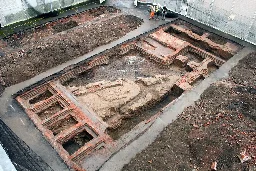
> The castle was first constructed during the Norman period as a simple motte and bailey. Over the centuries, various additions and periods of reconstruction extended the footprint of the castle, which by the 13th century became a royal residence for nobility and English kings. > > Between the 15th century and 17th century, the castle went into decline and much of the stonework from the fortifications were used to construct roads and buildings within the city centre, leaving only the keep which was used as a gaol (prison). > > In time, the keep was considered to be unsuitable and its demolition began in 1787, leaving no visible remains of the castle. > > During development works in the south-west of Gloucester city centre, archaeologists from Cotswold Archaeology have uncovered traces of the castle beneath the basketball court of the former HMP Gloucester. > > A number of trenches revealed medieval structural remains that archaeologists have interpreted as forming part of a masonry causeway or bridge structure. This provided access to the castle across its inner defensive ditch and continued north-east onto Castle Lane. > > Excavations also found subsequent demolition and robbing of stonework, evidenced by the infilled castle ditch, and comprised cultivation soils of the Castle Gardens, which occupied this area from the later 18th century through to the mid-19th century. > > In addition, a stretch of Post-medieval wall relating to the gardens was identified, which corresponds to a boundary shown on early and mid-19th century maps. > > According to the archaeologists: “The results highlight that significant archaeology continues to survive at a relatively shallow depth, enabling us to trace historic land use and landscape change within this part of the city across many centuries.”
- www.bbc.com Roman 'service station' may have been found by archaeologists
Archaeologists working on a dig near the A417 in the Cotswolds analyse items from their recent dig.
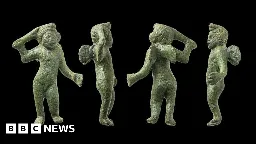
> Artefacts found at the A417 in the Cotswolds date back 12,000 years and include a rare cupid figurine, a Roman nail cleaner, pottery, coins and jewellery. > > ... > > "We have a nice Roman settlement and it lies on Ermin Street, the road between Roman Cirencester and Gloucester," said Mr Thompson. > > "We think that our settlement was being used to help with people that were travelling along the road and probably something to do with horses." > > One of the theories is that the settlement may have been used for people to stop by to have their horses cared for or exchanged. > > ... > > One of the the most unusual finds from the dig was a small Cupid figurine from the Roman period, said Mr Thompson. > > Found during the excavation phase of the dig, the figurine is 7cm (2.7in) in height and is made from copper alloy. > > The figurine is a depiction of Cupid in the style of Hercules. > > "It represents the power of love over even the strongest Heroes. It was probably a love token," added Mr Thompson. > > "It wouldn't have been cheap. It's a really unusual and special find." > > Of more than a thousand metal figurines from across Roman Britain, some 33 are known to depict Cupid, although this example appears to be the first to show Cupid as Hercules.
- www.bbc.co.uk Carlisle Roman archaeological dig seeks volunteers
Items found in the area include semi-precious gemstones, coins and a rare dye worn by Rome's elite.
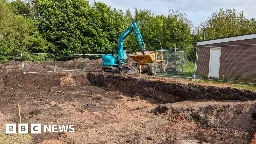
Volunteers are being sought for an archaeological dig looking to unearth Roman artefacts.
The community dig at Carlisle Cricket Club has been organised by Uncovering Roman Carlisle (URC) which previously found a bathhouse at the site.
The spring excavation is being carried out after work last year uncovered a rare dye, called Tyrian Purple, only used by the Roman elite.
Anne Quilter from Cumberland Council said: "Following the recent news of the Tyrian Purple, there’s a real buzz about the site."
The new dig will take place between 11 May and 15 June.
About 700 volunteering slots have been taken up so far, but URC is looking for more people to get involved. No previous archaeology experience is required.
- www.heritagedaily.com Archaeologists find moated medieval windmill
Archaeologists from MOLA (Museum of London Archaeology) have uncovered a moated medieval windmill during construction works of the National Highways A428 Black Cat to Caxton Gibbet improvement scheme in Bedfordshire, England.

> Archaeologists from MOLA (Museum of London Archaeology) have uncovered a moated medieval windmill during construction works of the National Highways A428 Black Cat to Caxton Gibbet improvement scheme in Bedfordshire, England. According to the researchers, the mill dates from between 1066 to 1485 during the medieval period. > > Owning a mill would have been a great position of power for the local lord of the manor. The lord received money for the flour and rent from local tenants who farmed the land around it. > > Excavations have revealed that the mill had a large central post used to orient the sails towards the wind. The post was found partly buried in a large mound used for support, making it a sunken type of Post Mill that first appeared in Europe from the 1100s to 1200s. > > No physical remains of the mill survives above ground and the mound it stood on was levelled for farming. However, upon removing the topsoil, archaeologists found traces of a moat ditch surrounding the structure. > > A moat is not unusual for sunken type Post Mills, as the excavated soil from the ditch was used to build the mound where the larger mill structure was situated. > > According to a representative from MOLA: “Because this area is naturally very wet, the deep ditch would have collected water and become a moat. We could see evidence for this during our excavations because it was full of shells from water snails!”
- www.bbc.com Ogham stone unearthed in Coventry garden excites archaeologists
Experts are attempting to translate the Ogham script, which could date back as far as the 4th Century.

> The discovery of small stone carved with an early form of Celtic script has caused excitement among archaeologists after being dug up in a garden. > > It was found by geography teacher Graham Senior in Coventry during lockdown in 2020 while he was weeding, but its true value was only recently understood. > > Dating back possibly as far as the 4th Century, the stone's Ogham script features a series of lines inscribed on three of its sides, and experts are trying to understand their full meaning. > > Teresa Gilmore, finds liaison officer for Staffordshire and West Midlands said: "It's an amazing find, we're very lucky." > > She added: "Most Ogham inscriptions you generally find in the more Celtic areas - Scotland, Ireland and down in Cornwall - you don't generally get them down in the Midlands." > > ... > > Mr Senior said his theory was that it could have been a keepsake, possibly carried by a Roman soldier. > > "It’s a very tactile thing - just feels right as if it was meant to be held," he said. > > The piece of sandstone measures just 11cm (4 inches) in length and is believed to have been carved sometime between the 4th and 6th Century AD. > > Ms Gilmore said another theory was that it could have been used by Irish tradesmen to make contact with each other.
-
Bronze Age Well Lined With Wood Discovered in England
> According to a statement released by the Oxfordshire County Council, a Bronze Age well lined with wood was uncovered during an investigation conducted by Oxford Archaeology ahead of a road construction project in southeastern England. The well is thought to have been used for agricultural purposes by people living in a nearby settlement. “When investigating what appeared to be a standard pit for the site, the archaeological team started exposing the remains of a preserved wooden post driven vertically into the ground,” said archaeologist John Boothroyd. “Further excavation revealed that these posts formed the uprights of a wattle structure that lined the edge of the pit,” he added, explaining that the waterlogged ground preserved the pieces of wood. The wooden lining was carefully dismantled for removal, and a sample was sent for analysis. Study of soil samples could also help the researchers determine how the surrounding landscape was used.
- www.bbc.co.uk 'Groundbreaking' Roman figurine unearthed in A417 roadworks
Other artefacts, some dating back 12,000 years, are discovered during the extensive project.
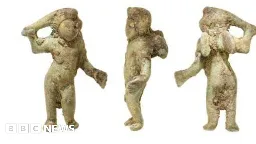
A Roman cupid figurine and other artefacts dating back 12,000 years have been found during major roadworks on the A417 in the Cotswolds.
The items - including including pottery, nail clippers, coins and jewellery - will go on public display on 11 May at Gloucester Guildhall.
A National Highways spokesperson said: "Groundbreaking investigations have helped to reveal Gloucestershire’s rich history dating back thousands of years thanks to archaeologists working on the A417 Missing Link project."
The pieces date from the Mesolithic, Neolithic, Bronze Age, Iron Age, Roman periods, and the Second World War.
- www.livescience.com 1,900-year-old Roman legionary fortress unearthed next to UK cathedral
Ongoing excavations have revealed Roman ruins that were once part of a legionary fortress.
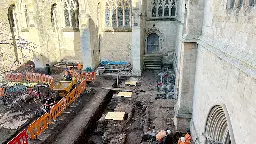
Archaeologists in England have discovered several Roman ruins buried next to a cathedral in Exeter.
The structures, which were built between A.D. 50 and 75, include a street and wooden buildings that were once part of a Roman legionary fortress, according to a statement.
The construction itself was likely part of a "long barrack building," John Allan, a cathedral archaeologist with the University of Exeter, said in the statement.
- www.bbc.co.uk What is the mystery Roman object found on hill in Norton Disney?
Historian and broadcaster Dr Jonathan Foyle gives his take on suggestions put forward by BBC website users.
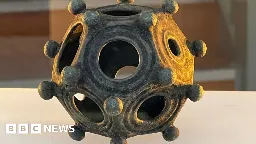
> A mysterious Roman artefact dug up in Lincolnshire has left experts baffled as to what it is. Found during an amateur archaeological dig in Norton Disney - where Walt Disney's ancestors hailed from - the 12-sided object has prompted fantastical suggestions as to its use.
- www.heritagedaily.com Lump of Tyrian purple uncovered at Carlisle excavation
Archaeologists from the Uncovering Roman Carlisle project have discovered a rare lump of Tyrian purple at the grounds of the Carlisle Cricket Club in Carlisle, England.
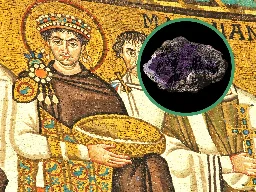
> Archaeologists from the Uncovering Roman Carlisle project have discovered a rare lump of Tyrian purple at the grounds of the Carlisle Cricket Club in Carlisle, England. > > The project is a community supported excavation by Wardell Armstrong, focusing on uncovering a Roman bath house found in 2017. > > The bath house is located near the Roman fort of Uxelodunum (meaning “high fort”), also known as Petriana, in the Carlisle district of Stanwix. > > Uxelodunum was constructed to control the territories west of present-day Carlisle and an important crossing on the River Eden. The fort was garrisoned by the Ala Petriana, a 1,000-strong cavalry unit, whose members were all granted Roman citizenship for valour on the field. > > Previous excavations at the bath house have discovered colossal sandstone heads depicting Roman gods, in addition to engraved gems known as intaglios, figurines, animal bones, and imperial-stamped tiles. > > During the latest season of excavations, archaeologists found a mysterious lump of a soft purple substance. The substance was tested by researchers from Newcastle University, revealing that it contained levels of Bromine and beeswax. > > According to the researchers, the substance is Tyrian purple, a coloured dye associated with the Imperial Court in the Roman Empire. Tyrian purple is secreted by several species of predatory sea snails in the family Muricidae, rock snails originally known by the name Murex. > > Frank Giecco, Technical Director at Wardell Armstrong, said: “For millennia, Tyrian Purple was the world’s most expensive and sought after colour. It’s presence in Carlisle combined with other evidence from the excavation all strengthens the hypothesis that the building was in some way associated with the Imperial Court of the Emperor Septimius Severus which was located in York and possibly relates to an Imperial visit to Carlisle.” > > “It’s the only example we know of in Northern Europe – possibly the only example of a solid sample of the pigment in the form of unused paint pigment anywhere in the Roman Empire. Examples have been found of it in wall paintings (like in Pompeii) and some high status painted coffins from the Roman province of Egypt,” said Giecco.
- www.bbc.com Squirrels may have given medieval Britons leprosy
It’s the first time a medieval animal has been identified as a host for the disease.

> Leprosy is a chronic disease infectious between humans that attacks the skin, nerves and mucous membranes. No-one is thought to have caught it inside the UK for 70 years but it's still endemic in many parts of the world. > > Armadillos carry it and are suspected of passing it on to humans. Some modern red squirrels in the UK also have it, but there has never been a reported case of transmission to humans and experts say the risk is very low. > > ... > > The researchers studied 25 human and 12 squirrel samples. > > The human remains came from a Winchester leprosarium (hospital for people with leprosy) and the squirrel remains from a nearby pit used by furriers. > > ... > > The study is published in the journal, Current Biology.
- www.bbc.com Ten-year-old metal detectorist finds rare piece of history
Ten-year-old Brodie says he dreams of finding "a Roman horse and carriage," in the future.
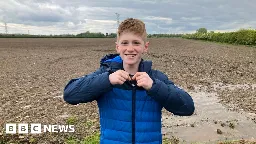
> Brodie was out with Gloucestershire Metal Detecting Club when he found a rare 14th Century seal just metres from the family car and an inch underground. Brodie said in the future he hoped to find something "really big", like a Roman sword. > > Gloucestershire and Avon Finds Liaison Officer Kurt Adams said it was probably an ecclesiastical seal, with the lamb of God pictured on the front and a banner behind that read: "Roger of Tetbury". "It's a lovely find, and a really good quality one as well," he added. > > ... > > Because the seal was not classed as treasure, Brodie is able to keep it and has already set his sights on something bigger. > > "I always dream of finding something really big, like a horse and carriage or something, like gold jewellery or Roman swords and hats", Brodie said.
- www.heritagedaily.com Archaeologists uncover possible phallus carving at Roman Vindolanda
Excavations at the Roman fort of Vindolanda have uncovered a possible phallus carving near Hadrian’s Wall.

> Vindolanda (translated as “white field” or “white moor”) was a Roman auxiliary fort that guarded a major highway called the Stanegate. > > No less than nine forts were built of timber or stone at Vindolanda from between AD 85 to AD 370, creating one of the most complex archaeological sites in Britain and a unique cultural legacy of frontier life. > > ... > > During the latest season of excavations, a possible phallus symbol has been uncovered in the last remaining turfed area within the boundaries of the fort. The symbol is carved into a stone slab and could be a depiction of a fascinus, used to invoke divine protection. > > Phallic imagery can be found across the Roman world in sculptures, mosaics, frescoes, and portable objects such as pendants or bulla. > > The Roman’s believed that the phallus was the embodiment of a masculine generative power, and was one of the tokens of the safety of the state (sacra Romana) that gave protection and good fortune. > > Along the corridor of Hadrian’s Wall, there are 59 known phalli which consist of incised, relief, or sculpture phalli. Each architectural type of phalli have been grouped into one of nine morphological traits: the rocket, the hammer, the kinky-winky, the splitcock, the pointer, the double-dong, running hard, the beast, and the lucky dip.
-
Time Team detectives make Iron Age discovery behind Largs
> The Inverclyde Time Teamers, say they have found a previously unrecorded prehistoric hut circle, dating from between 1200BC and 500AD on the moors, just under a mile north east of Haylie viewpoint > > Two of the detectives, Stephen McAllister and Allan Kinniburgh, were surveying the piece of land during Sunday afternoon after aerial photographs and computerised mapping and scanning equipment indicated it was a possible hotspot. > > Stephen said: “Our target presented as circular structure with a very well defined raised outline, approximately 10 metres across. > > "We thought it might have been a sheep ree, remnants of an Iron Age defensive dun or a prehistoric enclosure. > > “Having had a closer inspection, and comparing this with similar structures we have visited or discovered, we have a very high level of confidence in announcing this as something that looks like a previously unrecorded prehistoric dwelling or hut circle find.
- www.bbc.com Wandlebury Country Park has first archaeological dig in 30 years
The park is celebrating its 70th anniversary after it opened to the public on 26 April 1954.
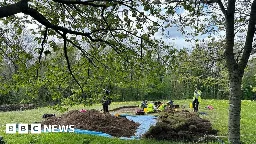
> Archaeologists are conducting the first dig in a country park for almost 30 years. > > Wandlebury Country Park invited teams from the Department of Archaeology at the University of Cambridge and Cambridge Archaeological Unit on a two-week dig. > > They will investigate the archaeological past of Wandlebury, where excavations were last carried out between 1994 and 1997. > > The park, near Cambridge, is celebrating its 70th anniversary after it became a public open space on 26 April 1954. > > Wandlebury sits on top of a small chalk hill and is home to an Iron Age hillfort, referred to as the Wandlebury Ring, which is around 1000ft (300m) in diameter.
- www.bbc.com Historical coin hoard found buried under Dorset cottage
The cache of more than 1,000 gold and silver coins has been valued at up to £30,000.
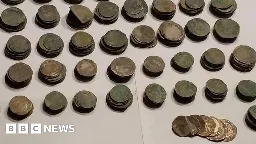
> A buried hoard of coins dating to the 16th and 17th Centuries has been found during renovation work on a cottage. > > The cache of more than 1,000 gold and silver coins was discovered under an earth floor at South Poorton, Dorset. > > One of the property's new owners, Robert Fooks, was digging with a pickaxe by torchlight when he found the trove in a pottery bowl. > > Auctioneers hope to sell the collection for between £15,000 and £30,000. > > ... > > The hoard, discovered in October 2019, was returned to the couple this year after expert analysis and legal work. > > The British Museum guessed they were deposited early in the English Civil War (1642-51) by a landowner trying to keep his wealth safe. > > The collection, including James I and Charles I gold coins and Elizabeth I silver shillings, is being sold by Duke's Auctions in Dorchester on Tuesday. > > Mrs Fooks said the property's previous owners came close to finding the hoard. > > She said: "They had removed the flooring on top of the earth and stopped work. The coins were about 10 inches (25cm) further down."
- www.theguardian.com Once-in-a-generation lunar event to shed light on Stonehenge’s links to the moon
Archaeologists and astrologers to study Wiltshire site’s lesser understood connection to the moon

The rising and setting of the sun at Stonehenge, especially during the summer and winter solstices, continues to evoke joy, fascination and religious devotion.
Now a project has been launched to delve into the lesser understood links that may exist between the monument and the moon during a once-in-a-generation lunar event.
A “major lunar standstill”, which takes place once every 18.6 years, when moonrise and moonset reach their farthest apart points along the horizon, will take place in January 2025.
This will give archaeologists, astronomers and archaeoastronomers a rare chance to explore theories surrounding the event and the ancient people of Stonehenge. Some experts believe the people who built the monument were aware of the major lunar standstill and may have buried their dead in a particular part of the site because of its relationship to the phenomenon.
- www.improvethenews.org UK Returns Looted Artifacts to Ghana
The full story about UK Returns Looted Artifacts to Ghana. Know the facts. Reveal the bias. Verity.
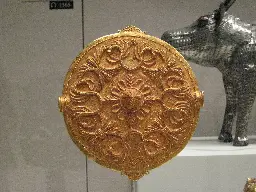
cross-posted from: https://fedinews.net/m/ImproveTheNews/t/6557
> * The UK has returned, by way of a long-term loan, 32 royal artifacts from the Asante Kingdom to present-day Ghana, more than 150 years after they were looted during the Anglo-Asante wars. BBC News (LR: 3 CP: 5) > * The return follows the signing of a loan deal between the British Museum (BM), the Victoria and Albert Museum (V&A), and the Asantehene Otumfuo Osei Tutu II, the current traditional ruler of the Asante people. BBC News (LR: 3 CP: 5) > * The mostly gold objects comprise 15 pieces from the BM and 17 from the V&A and are initially on loan for three years with the possibility of renewal for a further three years. Pulse Ghana > * The artifacts — including a golden peace pipe, a sword of state, and golden badges — will be displayed at the Manhyia Palace Museum in the Asante region's capital Kumasi in May as part of the Asantehene’s silver jubilee celebrations. Tribune Online > * Commenting on the artifacts' temporary return, Nana Oforiatta Ayim, a special advisor to Ghana's Minister of Culture, emphasized their "spiritual importance" and described the regalia as "part of the soul of the nation." Guardian (LR: 2 CP: 5) > * The Asante kingdom was once one of the most powerful and significant states in West Africa. In 1874, British troops launched a "punitive expedition" against the Asante, plundering Kumasi and looting many of the palace treasures. Yahoo News > > Narrative A: > > * This loan is an acknowledgment by the UK of the artifacts' spiritual and cultural significance to the Asante people. Although the objects form only a part of the Asante collections, this loan includes most of the key works to right some of the wrongs of Britain's colonial past. > THE ARTNEWSPAPER > > Narrative B: > > * This is a welcomed first step, but it must be seen as a first step toward the full-time return of the artifacts, otherwise, this is an embarrassment. The wounds of the past will only really begin to heal once the Asante cultural heritage returns to Ghana for good. > AFRICANEWS > > Nerd narrative: > > * There's a 1% chance that Kwasi Kwarteng will become UK Conservative Party Leader before Jan. 1, 2030, according to the Metaculus prediction community. > METACULUS (LR: 3 CP: 3)
- www.bbc.com Trevone beach bones thought to be from shipwrecked sailor
Analysis of the human bones found after coastal erosion sheds some light on their past.
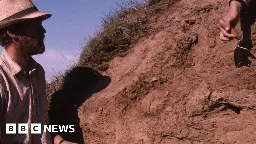
> Bones found after being unveiled by coastal erosion on the Cornish coast were probably from a shipwrecked sailor, say archaeologists. > > Analysis of the the bones found near Trevone in 2022 suggest the body was from the 18th Century, the Cornwall Archaeological Unit (CAU) said. > > The unit also said a skull found during a beach clean at Sennen in Cornwall in 2023 was about 3,300 years old. > > The discoveries are the latest human remains found on the coast.
- www.bbc.com Carrot harvest helped detectorist find hoard of ancient coins
Alan Baxter had to wait for years for the right conditions before he uncovered 500 artefacts from a Fife field.
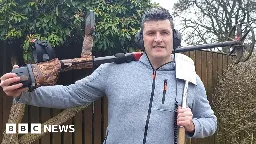
> When Alan Baxter found a medieval ring in a farmer's field he knew there could be more ancient artefacts nearby - but the stubble from the thick oat crop made it difficult for his metal detector to get anywhere near the ground. So he waited. > > Four years later the farmer had planted and harvested carrots. > > "It must have had a deep plough when the carrots got lifted and I could get my detector right to the soil," the 44-year-old told BBC Scotland News. > > "Every 3ft I was getting a signal. I couldn't move, there was stuff everywhere. > > "I didn't want to go home." > > The highlight of his haul in 2022 was a hoard of farthings from the reign of 15th Century Scottish King James III. > > ... > > An expert at the National Museum of Scotland said it was the first hoard of James III farthings to be found since 1919.